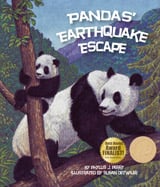Alignment to Standards for MN

| Grade | Number | Standard |
|---|---|---|
| 1 | 1.4.1.1.1 | Describe and sort animals into groups in many ways, according to their physical characteristics and behaviors. |
| 1 | 1.4.3.1.1 | Plants and animals undergo a series of orderly changes during their life cycles. |
| 2 | 2.4.1.1.1 | Describe and sort plants into groups in many ways, according to their physical characteristics and behaviors. |
| 3 | 3.4.1.1.1 | Compare how the different structures of plants and animals serve various functions of growth, survival and reproduction. |
| 3 | 3.4.1.1.2 | Identify common groups of plants and animals using observable physical characteristics, structures and behaviors. |
| 3 | 3.4.3.2.2 | Offspring are generally similar to their parents, but may have variations that can be advantageous or disadvantageous in a particular environment. Give examples of differences among individuals that can sometimes give an individual an advantage in surviva |
| 5 | 5.3.1.2.2 | The surface of the Earth changes. Some changes are due to slow processes and some changes are due to rapid processes. Explain how slow processes, such as water erosion, and rapid processes, such as landslides and volcanic eruptions, form features of the E |
| 5 | 5.4.1.1.1 | Describe how plant and animal structures and their functions provide an advantage for survival in a given natural system. |
| 5 | 5.4.4.1.1 | Humans change environments in ways that can be either beneficial or harmful to themselves and other organisms. Give examples of beneficial and harmful human interaction with natural systems. For example: Recreation, pollution, wildlife management. |
| K | 0.4.1.1.1 | Observe and compare plants and animals. |
| K | 0.4.1.1.2 | Living things are diverse with many different observable characteristics. Identify the external parts of a variety of plants and animals including humans. |
| K-3 | K-3.V.A.2 | use maps and globes to locate places referenced in stories and real life situations. |
| K-3 | K-3.V.B. | use maps and globes to locate people, places and things. |
| K-3 | K-3.V.B.1 | locate places by using simple maps, and understand that maps are drawings of locations and places as viewed from above. |
| K-3 | K-3.V.B.4 | locate the continents and oceans on a map of the world and a globe. |
| K-3 | K-3.V.C.1 | name and locate physical features of the United States, including places about which they have read. |